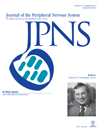The coordinate regulation of sensory afferent CNS targeting and CNS longitudinal tract organization in Drosophila during neural development
Abstract
Longitudinal axon fascicles within the Drosophila embryonic CNS provide connections between body segments and are required for coordinated neural signaling along the anterior-posterior axis. We find that the establishment of CNS longitudinal tracts, and the formation of precise chordotonal mechanosensory afferent innervation to the same CNS region, are coordinately regulated by the secreted semaphorins Sema-2a and Sema-2b. Both Sema-2a and Sema-2b utilize the same neuronal receptor, plexin B (PlexB), but they serve repulsive and attractive functions, respectively, to promote interneuron fascicle assembly and sensory afferent connectivity. In the absence of Sema-2b or PlexB, chordotonal afferent connectivity within the CNS is severely disrupted, as are select interneuron pathways within longitudinal fascicles, resulting in specific larval behavioral deficits. These results reveal that distinct semaphorin-mediated guidance functions converge at the PlexB receptor, and that attractive and repulsive functions mediated by this receptor are critical for functional neural circuit assembly.




